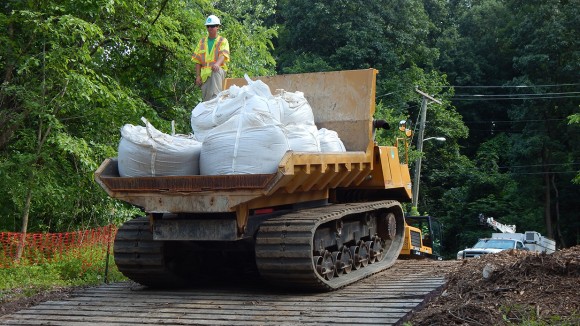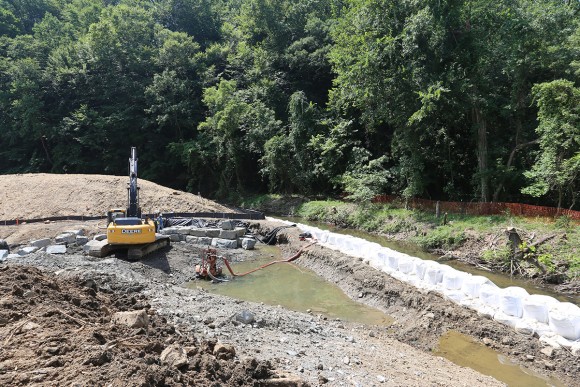Jones Falls Stream Restoration
The Jones Falls Stream Restoration project is a stream channel realignment project designed to restore natural stream conditions to a degraded section of the Jones Falls. This is Blue Water Baltimore’s first stream restoration project, signifying a new level of restoration and expertise needed to implement large scale projects.
As with any large-scale project, this one requires a strong team of contractors, which in this case is Brightwater Inc., and Environmental Quality Resources (EQR). The project manager on this project for EQR, Karly Epp, has taken the time to explain the main phases of this large-scale restoration project below:
Construction kicked off on May 13, 2016 with a pre-construction meeting between Blue Water Baltimore, Brightwater Inc. (designer), and Environmental Quality Resources (contractor). The project is broken down into three phases in which roughly 500 feet of stream channel will be relocated in order to create more natural hydrology.

Installation of Erosion and Sediment Controls
Phase 1 entails the installation of erosion and sediment controls such as silt fence and stone construction entrances. These devices are installed to prevent sediment runoff into the stream or off-site during construction activities.
Once approved by a Baltimore County inspector the construction crew installs a temporary barrier diversion in the stream, which is the beginning of phase 2. The purpose of this diversion, made of large sandbags, is to divert the existing stream flow away from the work area. This allows the crew to construct the new stream channel behind the barrier, in dry conditions.

Although a long process to install, the diversion was necessary due to the high flow rate of the waterway. Alternatively, stream restoration crews would have to pump the entire stream around the work area with large gas powered pumps.
Demolition of the Existing Concrete Channel
Phase 2 continues with the demolition of the existing concrete channel. Once removed, an excavator is used to cut out soil and shape the new channel. This design incorporates multiple stream structures built of stone and the root mass of trees. These structures are designed to control the flow of water in such a way that promotes a healthy channel hydrology, improved natural habitat, and improvements in water quality.

Most of the structures are built with stackable boulders imported from local quarries and can weigh as much as 175 pounds per cubic foot. An excavator operator places these stones at the direction of a layout foreman who shoots elevations for the structures.
The final phase of construction will be to release the stream flow into the newly constructed channel, while backfilling the old channel. The construction crew will install a 70 foot bridge across the new channel to transport soil to the old channel. Once complete, the heavy machinery moves off site and landscapers come in to replant the site. There will be over 600 plants planted across the site. Years of monitoring will take place post construction as well to document the changes in water quality.

